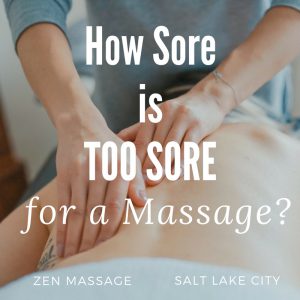A massage after a vigorous workout unquestionably feels good, reduces pain and helps muscles recover. Athletes and health professionals speak of how it eases inflammation, improves blood flow and reduces muscle tightness.
So, how does massage give this beneficial effect?
Well, vigorous exercise causes tiny tears in our muscle fibers, leading to inflammation, which is an immune reaction, as our bodies get to work repairing the injured cells.
Researchers have found that when a masseur goes to work, the production of compounds called cytokines, which play a critical role in inflammation, are reduced. They also found that massage stimulated mitochondria, tiny powerhouses inside cells that convert glucose into the energy. These are essential for cell function and repair and the stimulation helps our muscles adapt to the demands of increased exercise.
When your body aches, your muscles are tight, swollen, and in desperate need of release.
So when people ask, “Is deep tissue massage safe to get one while you’re still super sore? Or will that pressure make your tender muscles feel worse?”
Our short answer is usually, “Go for it!”
Because a post-workout massage is a great way to flush out the toxic waste your muscles produce during a workout. For the normal workout warrior getting a massage after working out is most beneficial for your body. It helps flush lactic acid build up out of muscle fiber and reduce recovery time.
On the other hand, if you are an athlete about to compete, an invigorating pre-competition massage is great to get you ready. Then a post-event massage to flush toxins and help you relax and recover afterward.
Really Really Sore?
Hold off on a strong, heavy-handed deep tissue massage. If your muscles are very tender to the touch, a traditional Swedish massage would be best because it stimulates blood and lymph circulation, bringing newly oxygenated blood to tender areas. This oxygenated blood helps “flush out” toxic waste in your muscles, which is the cause of typical soreness.
If the traditional Swedish massage turns out to be not enough for your muscle soreness, go for a stronger deep tissue or sports massage, but take note of how your body reacts.
If you feel pain mid-massage, ask your massage therapist to STOP to avoid irritating the muscles further!
Still sore?
You could get another massage as soon as two days after your first, but we recommend waiting five days. Drinking plenty of water and do light stretching to encourage full recovery. You should know that another massage won’t necessarily double-decrease your soreness over this short period of time.
Recovering from an injury?
If you’re injured, back away from the massage table!
There is a difference between being really sore and recovering from a true injury. If you’ve injured yourself recently, such as a pulled muscle, you should wait 24 to 48 hours before receiving a massage. In fact, a deep tissue massage could make matters worse for you and your injury. Instead, simply ice the tender areas and take a rest day to reduce the inflammation.
Every ache, pain, & sore muscle will react differently to massage. Some people may experience nearly instant relief post-massage, others might feel tender in trigger-point areas that were worked repeatedly during the massage. Whatever you’re feeling, as long as it’s not worsening or acute pain, you’re all good.
Book a Massage @ Zen Massage Today!
Sources:

